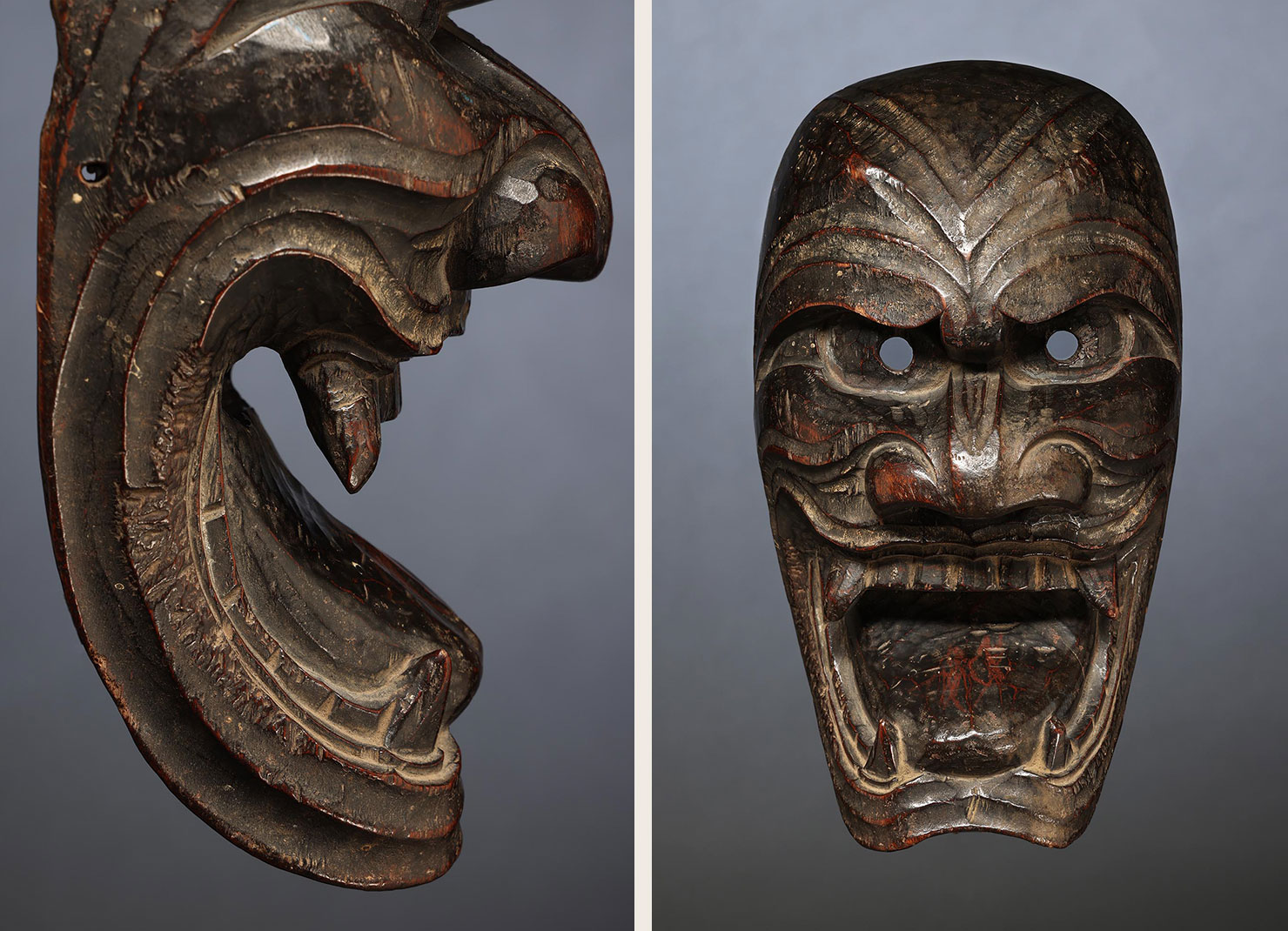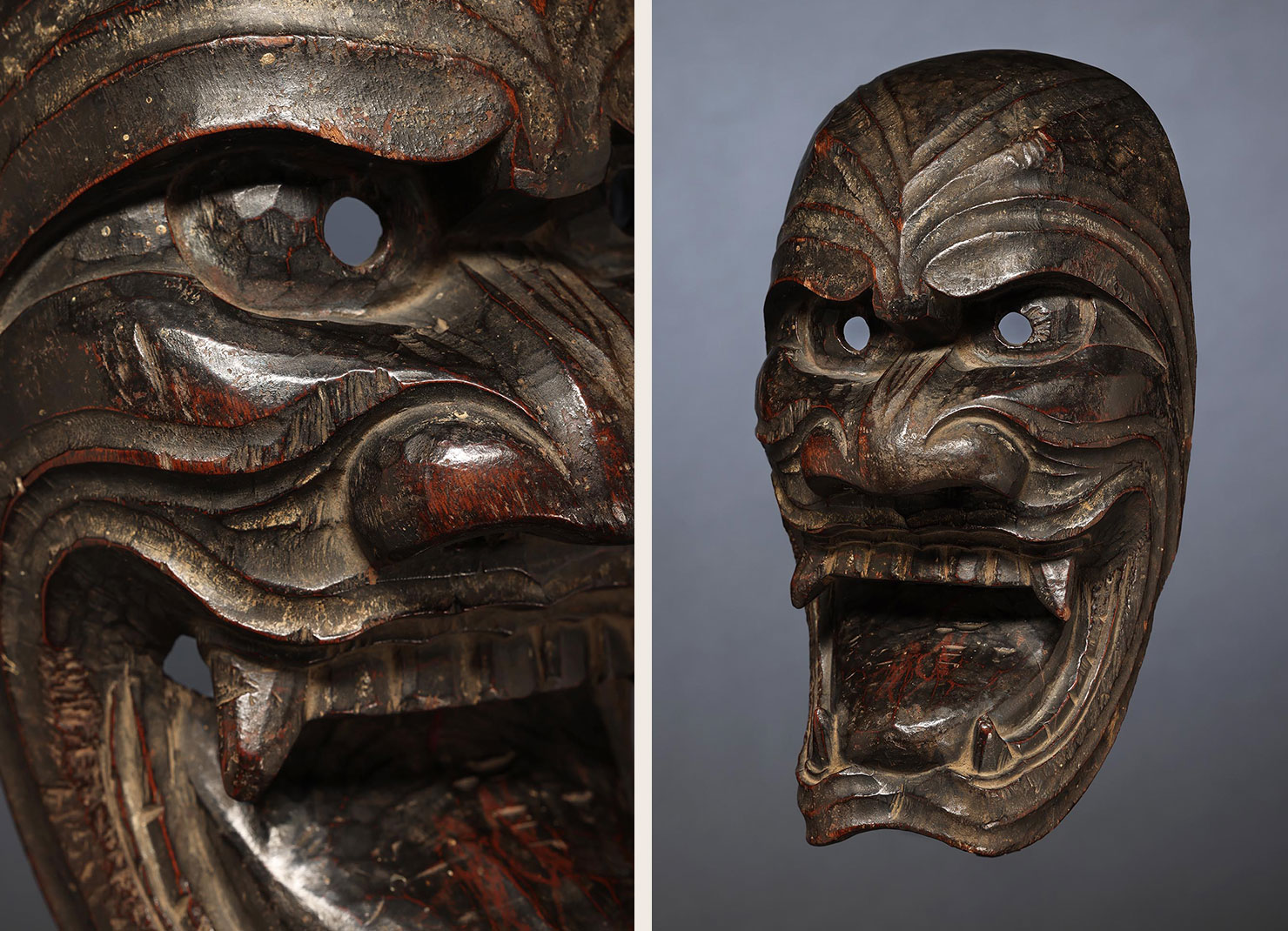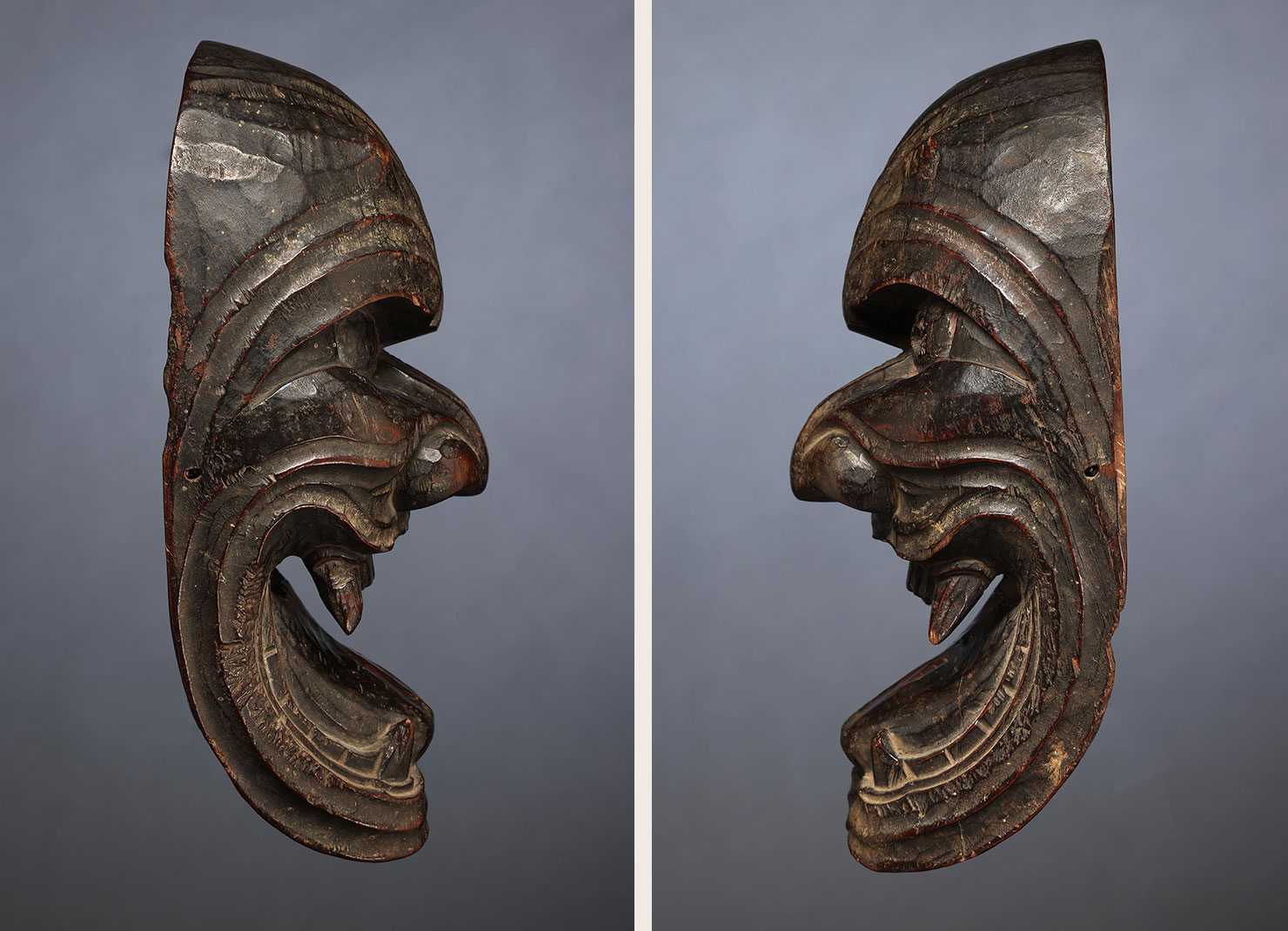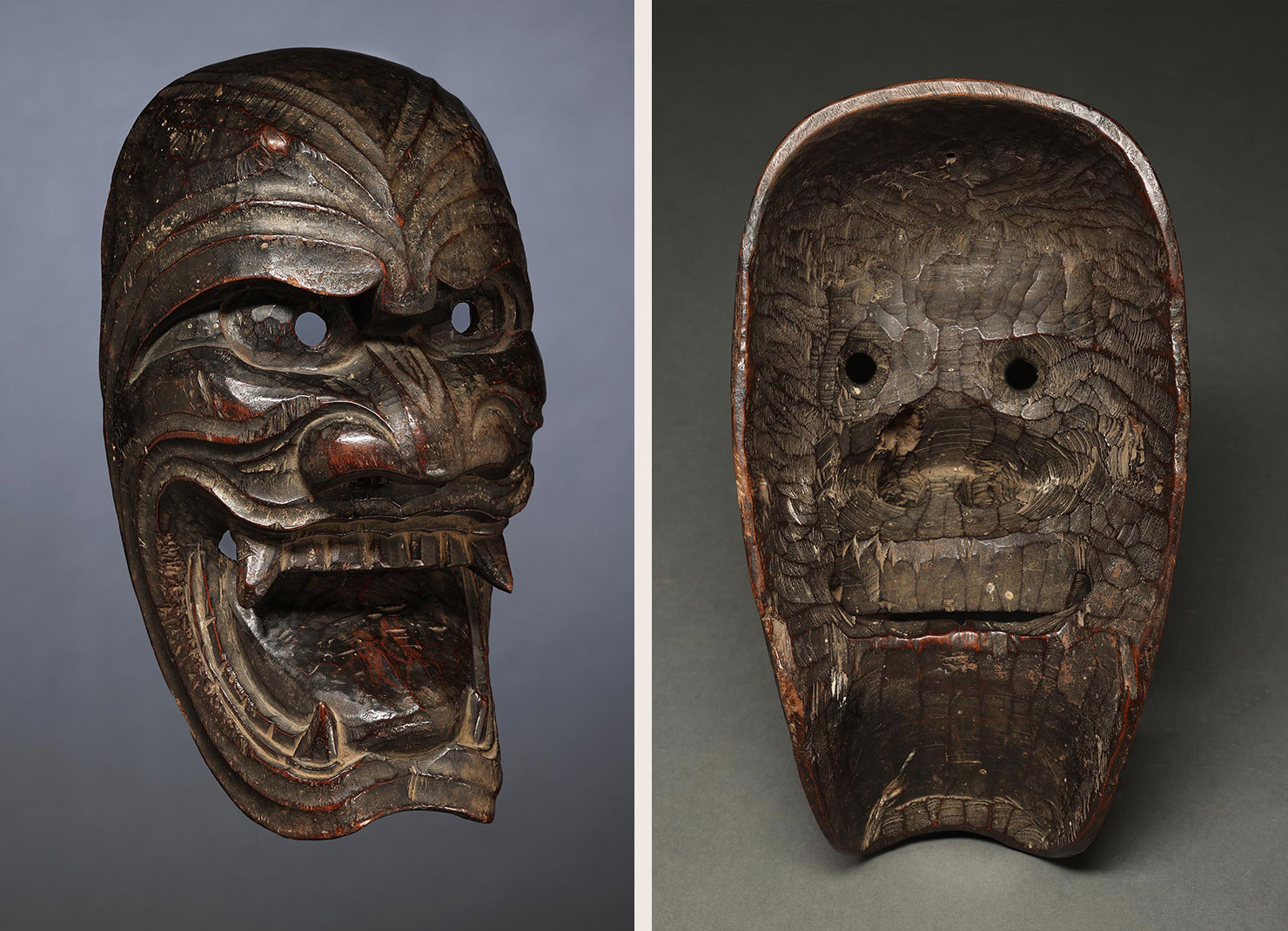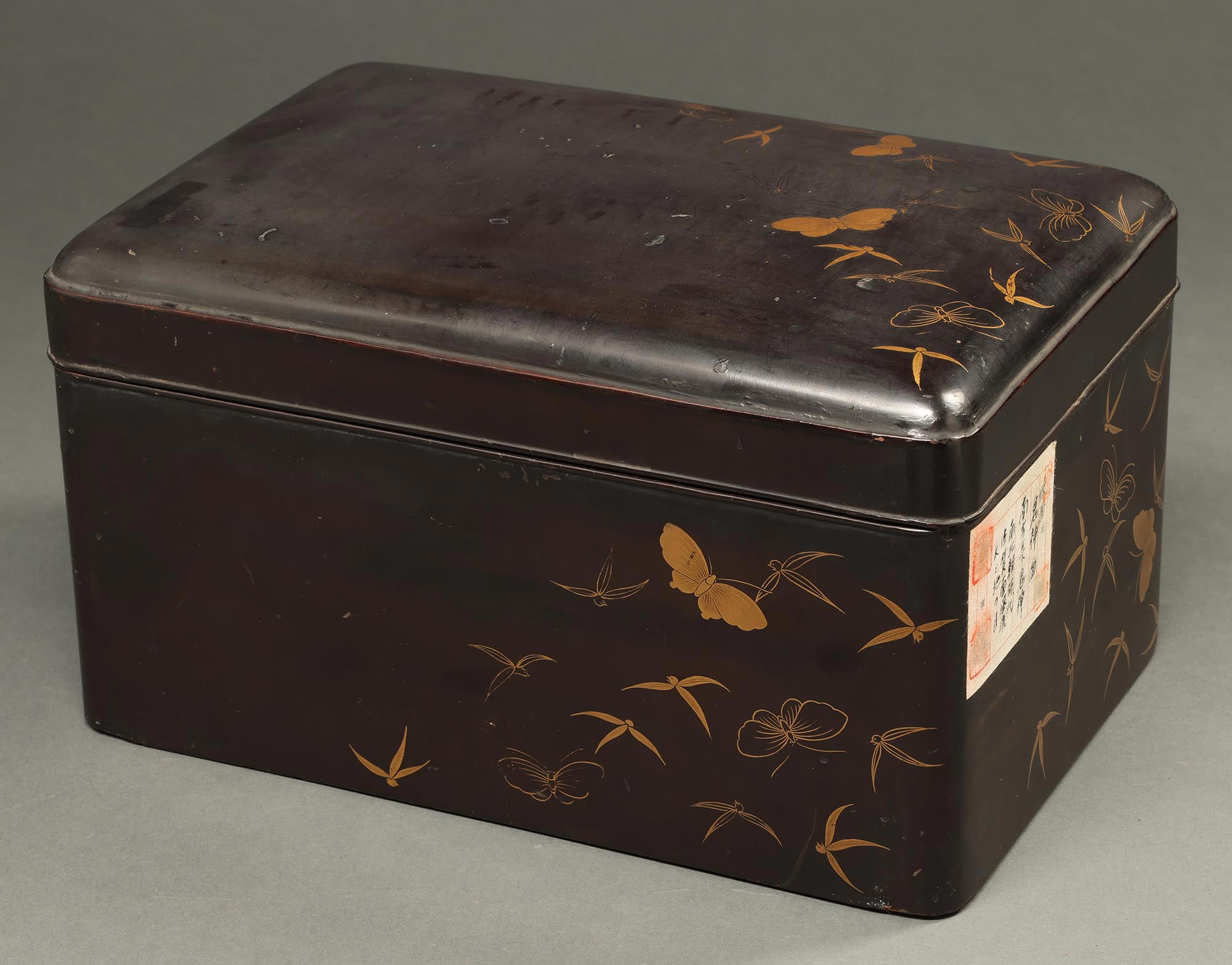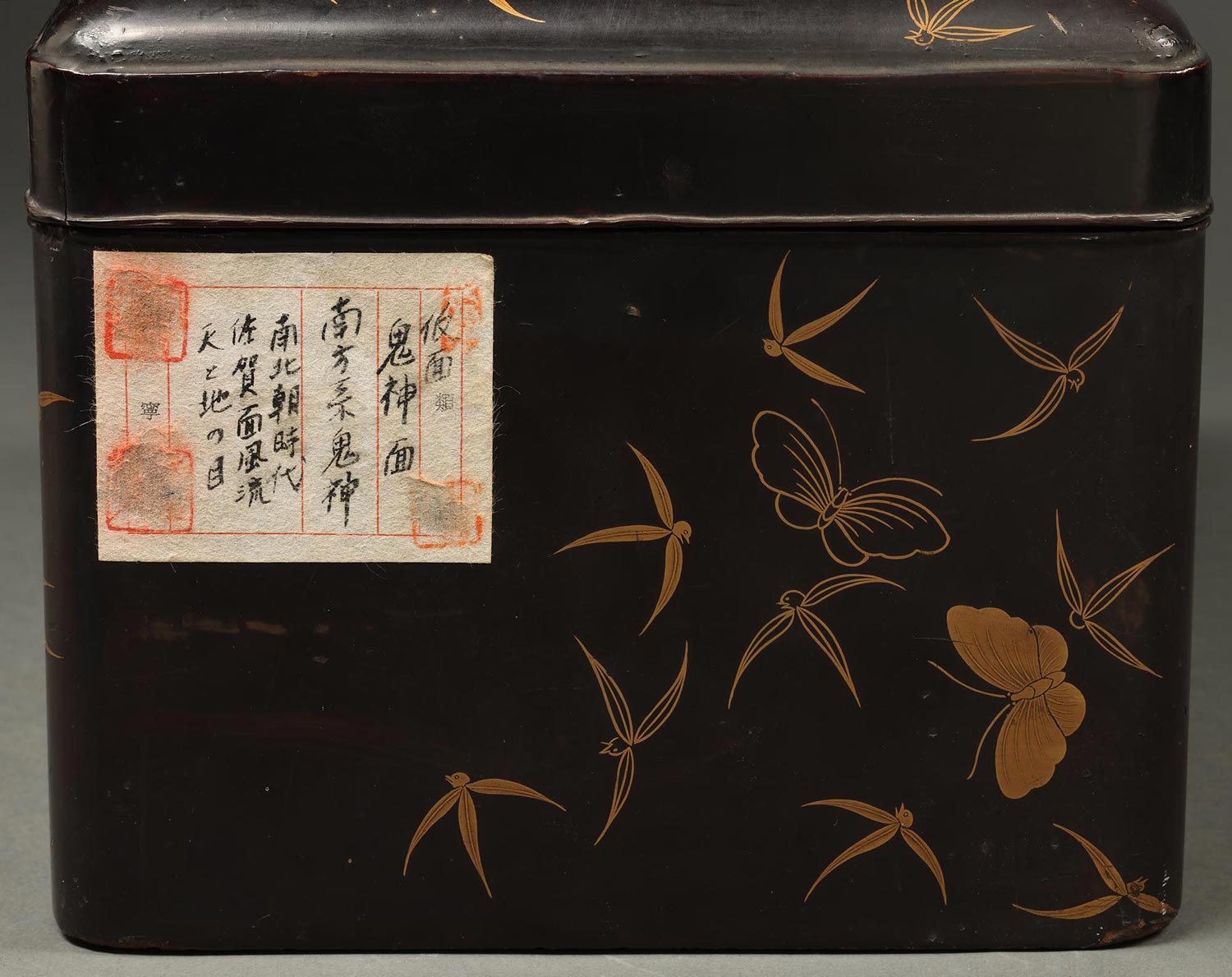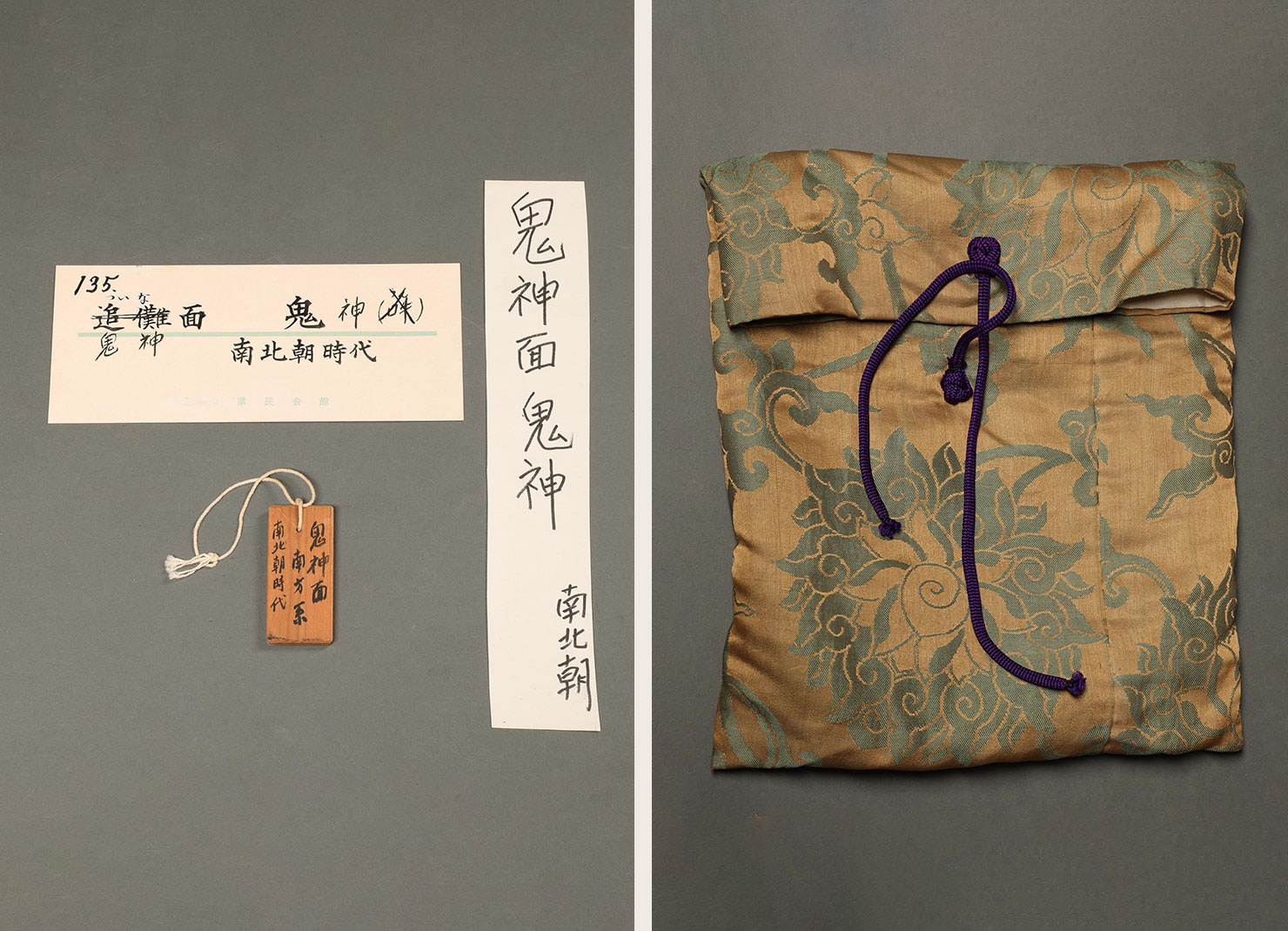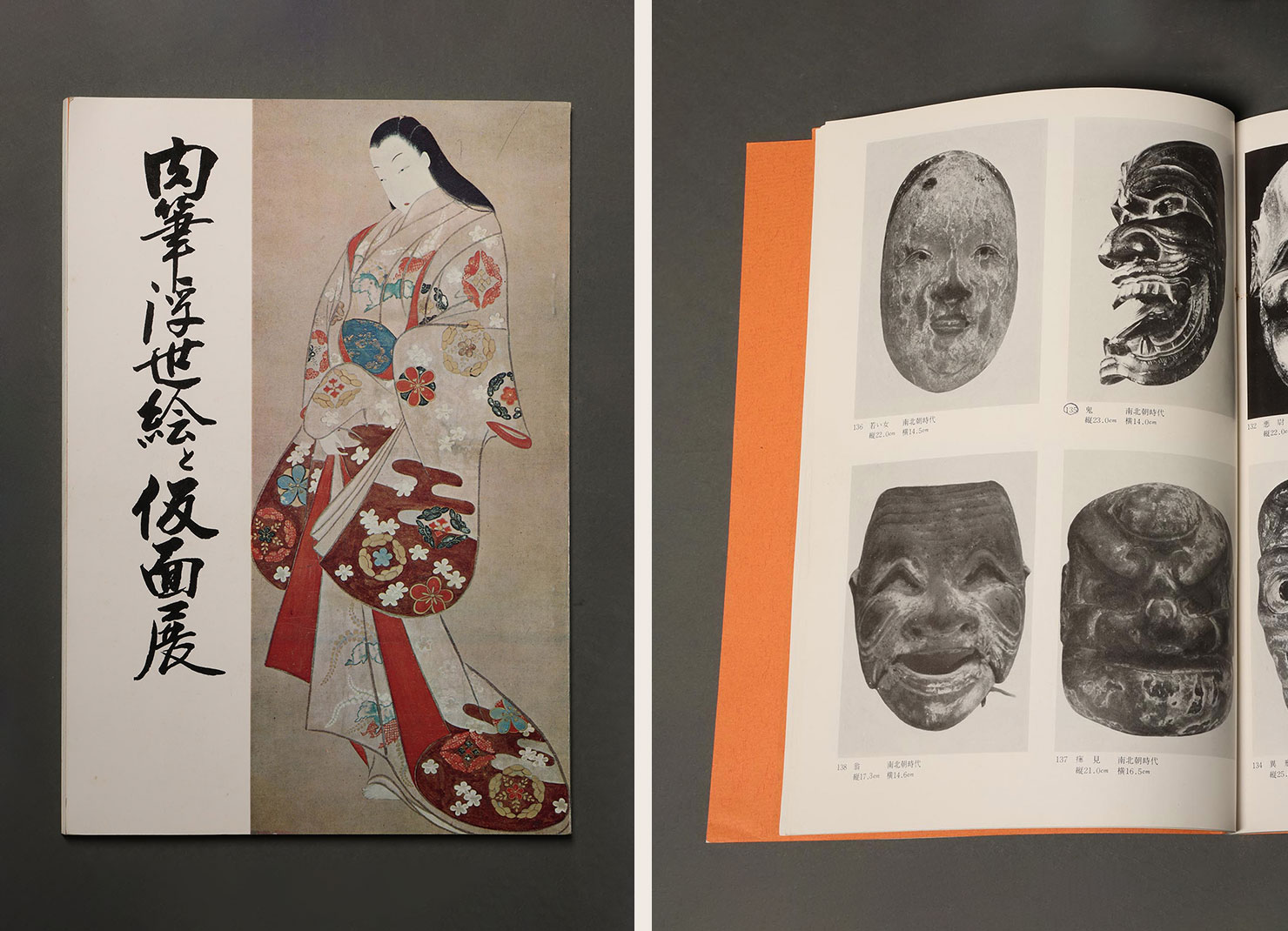ITEM 41318 – SOLD
Kijin Mask
Japan, possibly Kyūshū
Nanboku-chō period (1336-1392)
Wood, hand carving
9 x 5.5 in (23 x 14 cm)
Wooden black lacquered storage box with gold designs. Muromachi-Momoyama era (15th-16th C.)
Case label translation:
鬼神面類 Kijinmen rui (Kijin-type mask)
南方系鬼神 Nanpō-kei kijin (Southern style)
南北朝很流時代 Nanbokuchō jidai (Nanbokucho period)
佐賀面風流 Saga-men fūryū (Elegant Saga style)
天と地の目 ten to ji no me-kei (Eyes of heaven and earth)
This extraordinary Tsuina mask represents a kijin, or a ferocious deity. With a wide mouth displaying sharp teeth and bulging, asymmetrical eyes, the mask projects a sense of violent movement. It dates to the Nanboku-chō period (1336-1392), when Tsuina was just emerging as an art form. Prior to their use in Tsuina, kijin masks were used in rituals to dispel evil and sickness. Their fierce expressions served to represent different types of demons, animal spirits, and deities, and it is likely that this mask is of the shikami 顰 (biting lion) subtype. The lacquered box identifies it as a Southern-style mask, and the mention of Saga indicates it likely came from the southern island of Kyūshū.
This mask was published as Fig. 135 in the catalog “Hand-drawn Ukiyo-e and Mask Exhibition” (Nikuhitsu ukiyo-e to kamen-ten 肉筆画浮世絵と仮面展).


